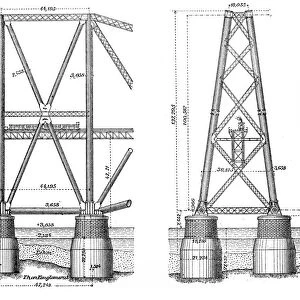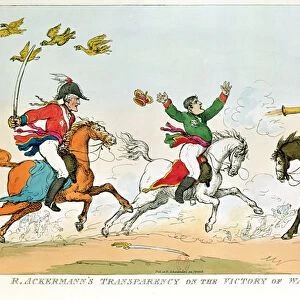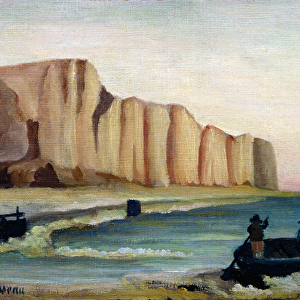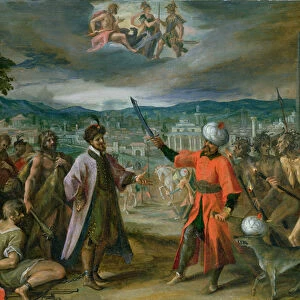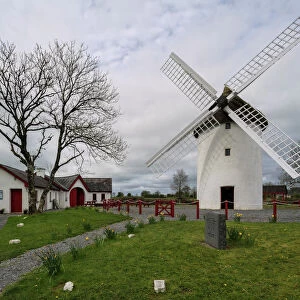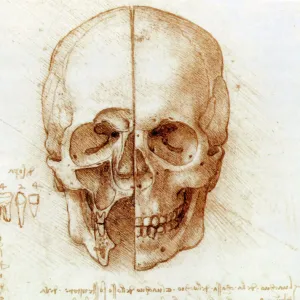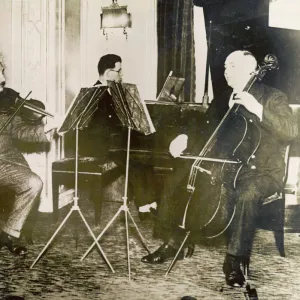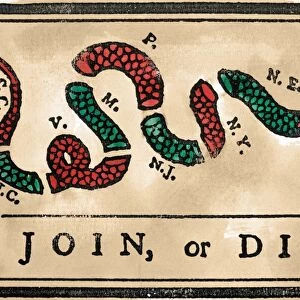Home > Arts > Artists > F > Benjamin Franklin
Franklin designing lightning rods
![]()

Wall Art and Photo Gifts from Science Photo Library
Franklin designing lightning rods
Franklin designing lightning rods. Historical artwork of Benjamin Franklin (1706-1790), American scientist, inventor and statesman, working on the design of lightning rods. Franklin observed, in an experiment in 1750, that a sharp iron needle would conduct electricity away from a charged metal sphere. Here, the smaller sphere, hanging from the ceiling by string, will react to the changing charge on the sphere and show whether the rod has removed the electricity. Two years later, in 1752, Franklin flew a kite in a storm, using a metal key to attract the lightning. Lightning rods are now widely used to protect buildings. From Physique Populaire (E. Desbeaux, 1891)
Science Photo Library features Science and Medical images including photos and illustrations
Media ID 6411100
© SHEILA TERRY/SCIENCE PHOTO LIBRARY
1700s 1750 1891 18th Century Benjamin Franklin Dead Desbeaux Designing Device Electrical Electricity Experiment Experimenting Forties Inside Inventor Lightning Rod Observing Physicist Physique Populaire Safety Scientist Study Us A Laboratory Physical
FEATURES IN THESE COLLECTIONS
> Arts
> Artists
> F
> Benjamin Franklin
> Science Photo Library
> History
> Science
> Scientists
EDITORS COMMENTS
This historical artwork captures the brilliant mind of Benjamin Franklin, the renowned American scientist, inventor, and statesman. In this illustration dating back to the 18th century, we witness Franklin diligently designing lightning rods - a groundbreaking safety device that would revolutionize building protection. Franklin's fascination with electricity led him to conduct various experiments in his laboratory. In 1750, he observed that a sharp iron needle could effectively conduct electricity away from a charged metal sphere. This discovery laid the foundation for his design of lightning rods. The smaller sphere hanging from the ceiling by string serves as an indicator of whether the rod successfully removes electricity. By reacting to changes in charge on the larger sphere, it demonstrates how effective Franklin's invention is at safeguarding against lightning strikes. Two years later, in 1752, Franklin famously flew a kite during a storm using a metal key to attract lightning bolts. This daring experiment further solidified his understanding of electrical phenomena and reinforced the importance of lightning rods for protecting structures. Today, thanks to Benjamin Franklin's pioneering work and ingenuity, lightning rods are widely utilized worldwide as essential safeguards against destructive electrical discharges. This artwork from Physique Populaire (E. Desbeaux) transports us back in time and reminds us of one man's immense contributions to science and technology that continue to impact our lives centuries later.
MADE IN THE USA
Safe Shipping with 30 Day Money Back Guarantee
FREE PERSONALISATION*
We are proud to offer a range of customisation features including Personalised Captions, Color Filters and Picture Zoom Tools
SECURE PAYMENTS
We happily accept a wide range of payment options so you can pay for the things you need in the way that is most convenient for you
* Options may vary by product and licensing agreement. Zoomed Pictures can be adjusted in the Cart.


